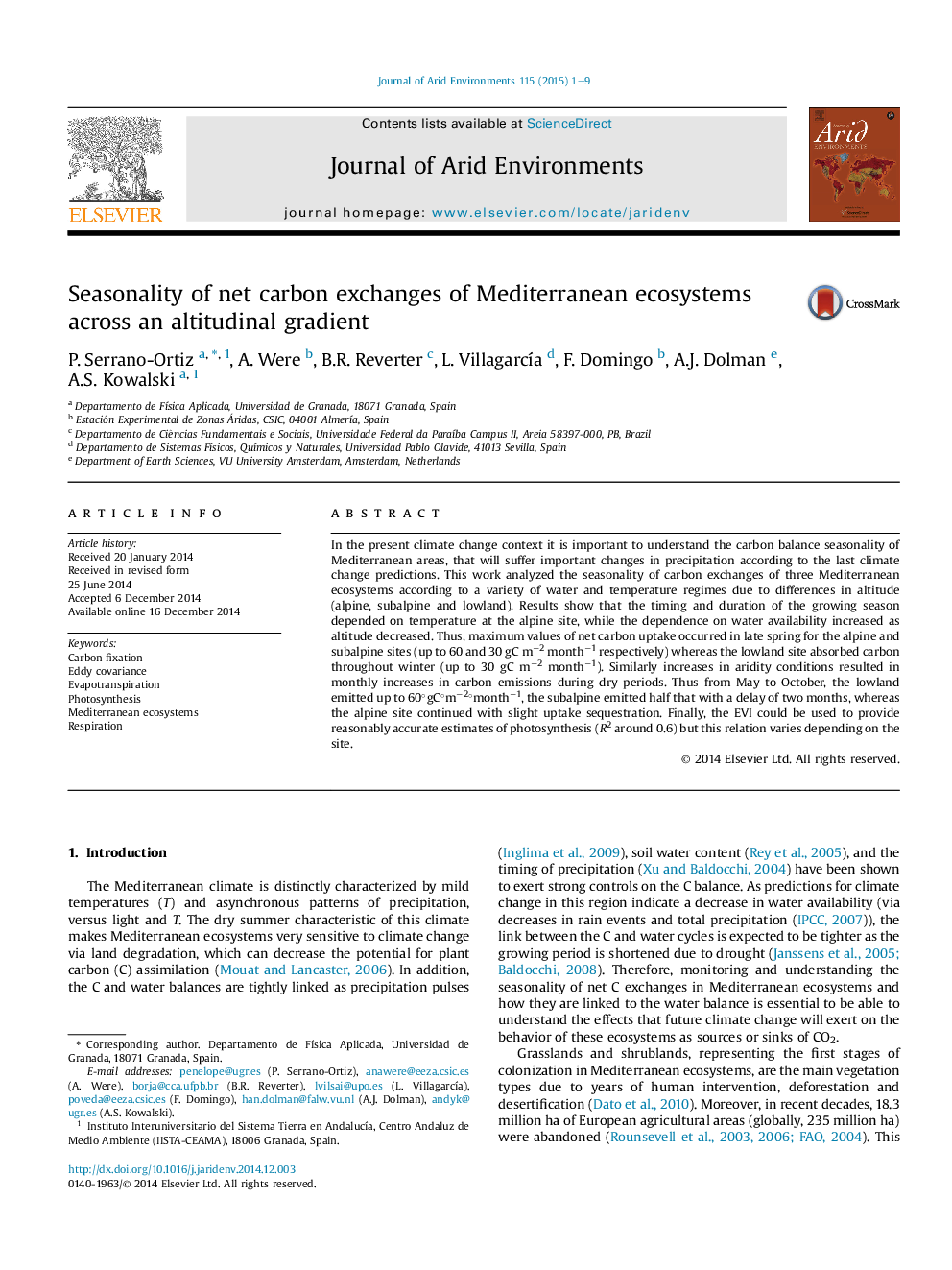| Article ID | Journal | Published Year | Pages | File Type |
|---|---|---|---|---|
| 4392934 | Journal of Arid Environments | 2015 | 9 Pages |
•We analyze seasonality of C fluxes of Mediterranean sites over an altitudinal gradient.•C fluxes depend on the spatial and temporal variability in water and temperature.•Decreases in altitude result in increases in C emissions during dry periods.•Increases in altitude result in increases in C assimilation during the growing season.•The Enhanced Vegetation Index could be used to estimate photosynthesis.
In the present climate change context it is important to understand the carbon balance seasonality of Mediterranean areas, that will suffer important changes in precipitation according to the last climate change predictions. This work analyzed the seasonality of carbon exchanges of three Mediterranean ecosystems according to a variety of water and temperature regimes due to differences in altitude (alpine, subalpine and lowland). Results show that the timing and duration of the growing season depended on temperature at the alpine site, while the dependence on water availability increased as altitude decreased. Thus, maximum values of net carbon uptake occurred in late spring for the alpine and subalpine sites (up to 60 and 30 gC m−2 month−1 respectively) whereas the lowland site absorbed carbon throughout winter (up to 30 gC m−2 month−1). Similarly increases in aridity conditions resulted in monthly increases in carbon emissions during dry periods. Thus from May to October, the lowland emitted up to 60°gC°m−2°month−1, the subalpine emitted half that with a delay of two months, whereas the alpine site continued with slight uptake sequestration. Finally, the EVI could be used to provide reasonably accurate estimates of photosynthesis (R2 around 0.6) but this relation varies depending on the site.
